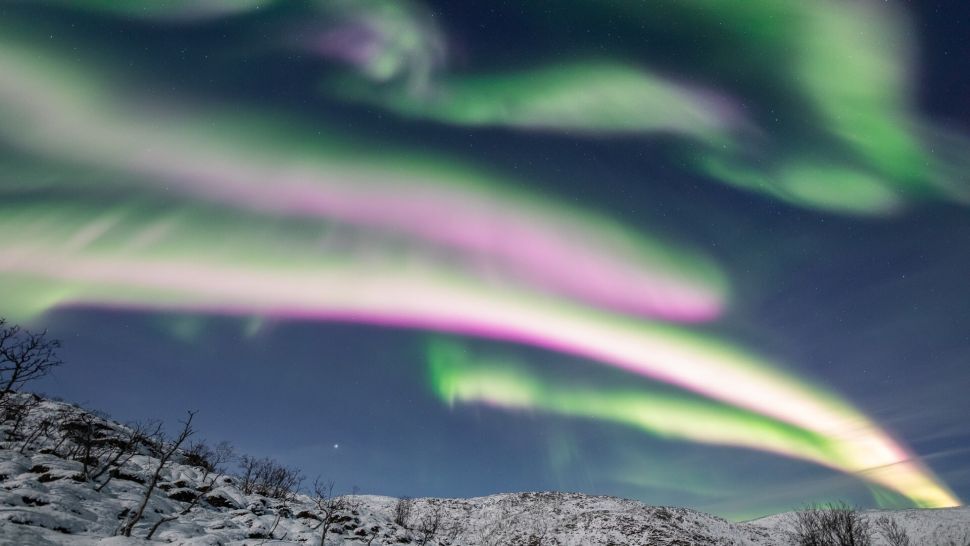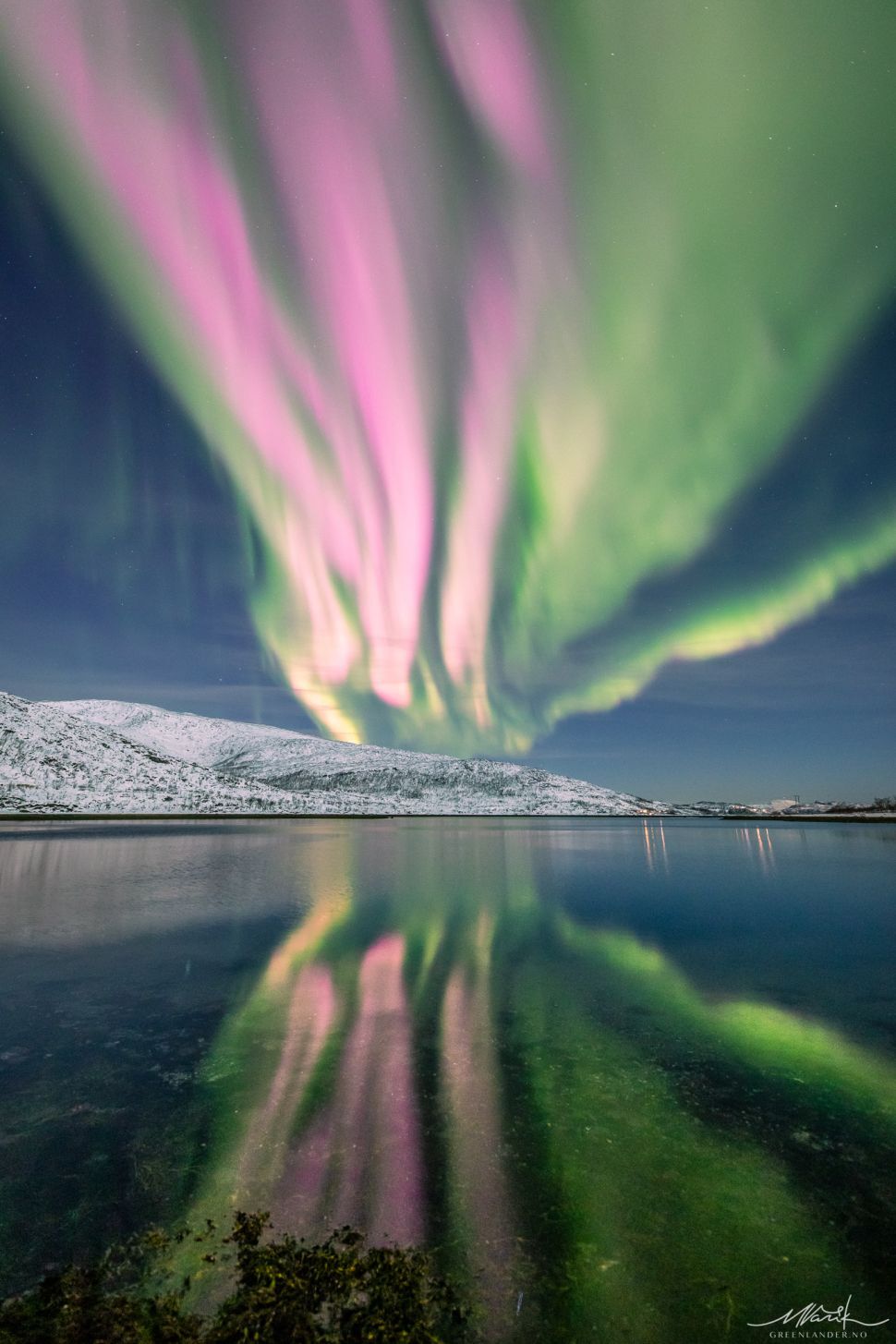18.12.2022
"No idea why auroras went orange, as I haven't seen that before."

Rare pink auroras have recently been spotted in Norway. (Image credit: Markus Varik)
For the second time in less than two months, Norwegian skywatchers were stunned by extremely rare pink auroras glimmering above the frozen landscape, which at moments turned into even rarer shades of orange.
The glowing displays were photographed on Dec. 10 by photographer and aurora chaser Markus Varik, who organizes polar light-watching trips near the Norwegian city of Tromso. Located 220 miles (350 kilometers) north from the Arctic Circle, the frosty countryside around Tromso offers perfect aurorawatching conditions.
In fact, the latest pink aurora display took place while space weather forecasters predicted less than mediocre chances of polar light sightings.
Auroras are triggered when energetic particles from the sun penetrate into Earth's atmosphere and interact with the planet's magnetic field. The most stunning displays usually occur during geomagnetic storms when huge bursts of magnetized plasma emitted by the sun during so-called coronal mass ejectionsstrike the planet's ionosphere, or upper atmosphere. But nothing like that was going on Dec. 10.
Varik and his group were taken by surprise by the pink glow that even turned orange in some places, which, the photographer said, is a very unusual sight.
"Sooo...the sky fell upon us again tonight," Varik said in a Facebook post (opens in new tab)on Dec. 10. "We already had very intense pink auroras in November and didn't think these would return anytime soon. Happy to be proven wrong. In the last image, you can even see some orange auroras. No idea why auroras went orange, as I haven't seen that before."

Seasoned aurora chaser Markus Varik was surprised by the second sighting of pink auroras in less than two months. (Image credit: Markus Varik)
Pink aurora hues are the result of the solar particles interacting with nitrogen in Earth's atmosphere, according to the Royal Museum Greenwich(opens in new tab). That only happens when the streams of charged particles, also known as solar wind, penetrate deeper into Earth's atmosphere, some 60 miles (100 km) above the planet's surface. The more common greenish auroras, produced by the interaction of the solar wind with oxygen, appear at higher altitudes of up to 150 miles (240 km).
The previous pink aurora display(opens in new tab) that surprised skywatchers in November appeared after a relatively mild geomagnetic storm tore a crack in Earth's magnetic field, allowing the solar wind to flow into the deeper layers of the atmosphere. What exactly caused the display of Dec. 10 is a bit of a mystery.
Varik, who has been leading aurora-watching trips for over a decade, said he's never before spotted such intense orange hues as those mixed with the pink on that particular night.
"We were all so blown away, speechless, really," he said. "Aurora danced in the sky for minutes in a row. Must have been that the crack opened up in Earth's magnetic field and it was probably an even bigger crack than usual."
According to Auroranights.co.uk(opens in new tab), orange polar light displays could be produced when the solar particles interact with the rare atmospheric gas neon.
Quelle: SC
